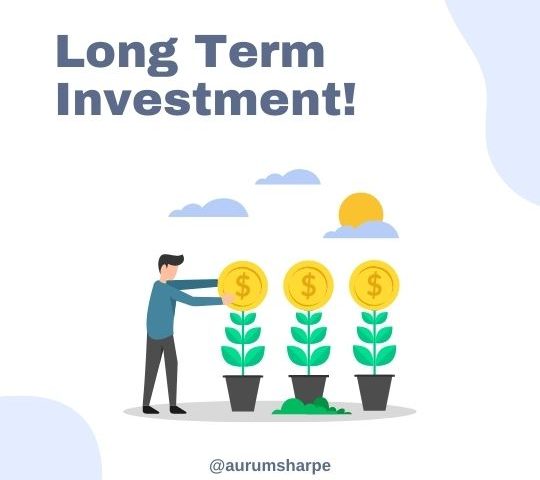What is the maximum LTV (loan to value) for a cash out refinance on an investment property?

Does a refinance appraisal affect property taxes?
December 27, 2021Where to Get LLC Loans for Investment Property
December 28, 2021Refinancing refers to the process where a property owner replaces their existing mortgage with a new one, in order to either save money or capture the equity in the real estate that they own.
As of the day of this writing, interest rates in general, for both purchase and refinance loans are at record lows. At the beginning of 2021, the average mortgage interest rate was a startling 2.65%, a full percentage point lower than it had been just a year before. The lowest level it has been in years.
During a low interest rate environment, like the one we are currently experiencing, refinancing an investment property opens up a huge opportunity for investors to decrease their monthly operating expense and increase their net cash flow.
Furthermore, pursuing a cash out refinance loan, can multiple these benefits by allowing a property owner to walk away from the transaction with money in their pocket in addition to saving money on interest in the long run. In this article we discuss in detail how cash out refinance loans work and the limits to how much you can get when it comes to investment property.
What is a Cash Out Refinance Loan

A cash-out refinance is loan that property owners acquire when they want to capture the equity in their real estate. The purpose of a cash out refinance loan is to secure a new loan with a balance large enough to both pay off the existing underlying mortgage one and allow the owner to get cash on the equity difference.
If a real estate investor bought a home 10 years ago for $400,000 that is now worth $600,000 and has successfully paid the down the mortgage to $250,000 that investor can use a cash out refinance loan in order to capture some of that $350,000 in equity that they now have.
By getting a cash out refinance loan for $500,000, they investor can pay off the existing mortgage, and receive the difference of $250,000 as a check at closing.
There are however limits to how much money a property owner can get out of a cash out refinance, and ultimately how much money they can pocket.
Overall, there are two types of cash out refinance loans available. Those that are considered ‘conforming loans’ that satisfy the rules and lending guidelines set forth by Fannie Mae, Freddie Mac, and their regulating body, the Federal Housing Finance Agency (FHFA).
The other type are those that are considered ‘non-conforming’, or loans generated that don’t follow the terms and conditions of Fannie Mae and Freddie Mac.
Why do a Cash Out Refinance Loan
The beautiful aspect of cash out refinance loans, is that the money an owner cashes out with once the loan is completed can be used for anything.
The proceeds can be used for personal uses, such as paying off medical bills, funding a college education, purchasing new equipment or a car. If the investor wants to make major repairs to the property, they can use the loan proceeds to do so. If the property investor would like to purchase another property entirely and add another property to their portfolio, they can use the funds for that as well.
The latter is actually the most common reason why property owners pursue a cash out refinance loan on an investment property. Popularized by the Buy, Renovate, Rent, Refinance, and Repeat method (BRRRR), many real estate investors now purchase properties with the goal to remodel them, rent them out to generate cash flow, and then do a cash out refinance in order to use the equity it to continue adding more and more rental income properties.
Unlike a business loan, a cash out refinance on an investment property provides real estate investors a myriad of options to grow their busines.
How a Cash Out Refi Works on an Investment Property
Doing a cash out refinance loan on an investment property in general works the same as it does for a primary, owner-occupied home. The borrower will find a lender that they feel will provide them the best terms, get pre-approved and open escrow. The lender will have an appraisal done on the property, which will determine the property’s value based on local real estate market trends, the interior and exterior condition of the property, and a thorough evaluation of what similar properties have sold at and are renting for, if applicable.
Once the appraisal report comes back, the lender will approve you for a loan amount that is a multiple of the property’s appraised value and their maximum LTV percentage.
After all the loan documents are signed and processed, the loan proceeds will be used to first pay off the existing mortgage, and the balance of the proceeds will be disbursed to the investor as a check or wire.

What Does LTV Mean?
LTV stands for loan-to-value ratio which reflects the borrowed amount as a percentage of the value of the property. The LTV of a property can be calculated by taking the loan amount and dividing it by either the purchase price of the property, if a purchase loan is being sought, or the appraised value of the property, if the borrower is seeking to do a refinance.
For example, if an investor wishes to purchase $1,000,000 property and is approved for a loan with a 70% loan-to-value ratio then the maximum loan amount that can get is $700,000, and they will have to bring the $300,000 difference to the closing table.
Likewise, if a property owner decides to refinance their existing home that’s worth $500,000 and they speak with a lender who’s offering a loan at an 80% LTV, then the loan balance for the new loan will be no higher than $400,000. Because they already own the property, the remaining $100,000 difference stands for the equity that remains in the home.
Because LTV plays just one factor when evaluating a loan, certain lenders will take it a step further, and use an LTV figure that accounts for the total of all outstanding loans on a property in relation to its value, called a combined loan-to-value ratio or CLTV.
To illustrate how this may be calculated, if a borrower has a $800,000 property and the lenders see there is a $100,000 draw on a home equity line of credit, a $450,000 first mortgage, and a second mortgage of $30,000 to fund repairs, that lender is going to assign the property a combined loan-to-value ratio of 72.5%.
Lenders may decide to use a CLTV ratio in addition to a LTV ratio to determine whether the borrower can afford the loan. If the CLTV is higher than the lender’s allowed standard this can be a huge indication of a potential loan default.
Why the LTV is So Important
The LTV ratio is important because it serves as a critical determining factor of how much a lender decides to allow a property owner to borrow. In other words, the LTV ratio acts as a determination of the potential risk of the loan that is being sought.
In general, the lower an LTV ratio is the less risk that is associated with that loan by a lender. For illustration purposes, a loan with a 40% LTV is much more favorable than a loan with a 100% LTV, because a loan of the former indicates that the owner has the money to not only service the loan (make the payment on time), but also has the capacity to withstand any future potential financial struggles, such as vacancy or a major damage. Versus the owner of the latter loan clearly has no equity in the property. They are borrowing the full amount and in general stand a greater chance of defaulting on the loan.
The reason why LTV has become such a dominant factor in lending, especially in the area of investment properties and cash out refinances, is because during the financial crisis of 2008 too many real estate property owners were overleveraged. As property values began to drop, LTV and CLTV ratios grew into the triple digits.
In fact, according to an analysis performed by the Urban Institute, it was poor performance among cash out refinances and refinances, and not expansion of lending to first time home buyers and borrowers with low FICO credit scores that played one of the major contributing factors to the financial downturn.
Another study performed by the Bank for International Settlements found that 90% of the subprime refinance loans, were those where the owners had cashed out multiple times pushing the LTVs to unsustainable ratios.
In the years following the Great Recession mortgage lenders have adopted stricter policies on the maximum LTV ratios they will allow on both the purchase and cash out refinance of any investment property.

What is a Maximum LTV for Cash Out Refinance Loans
The maximum LTV is a standard within a lender’s underwriting policy that sets the maximum loan amount the lender will allow the borrower to take on. Given the large role that cash out refinances did play in the economic turndown of 2008, as a general practice these days most lenders require a certain amount of equity to remain in the home.
In general, the maximum LTV for a cash-out refinance will vary depending on the lender and loan type.
Fannie Mae and Freddie Mac Maximum LTVs
The maximum LTV for a conforming Fannie Mae or Freddie Mac cash-out refinance is 75% for one unit investment properties, and 70% for 2-4 unit properties. In the case of conforming loans there are even stricter LTV ratios that may apply. If the property was on the market in the last 6 months, even if it was a one-unit property, the maximum allowable LTV drops to 70%.
Additionally, in order to even be eligible for a cash out refinance loan at these LTV’s, conforming loans also impose quite a few additional borrower standards that must be met, such as a higher credit score of at least 680 or higher; a minimum of one year of cash reserves; and the passage of at least 6 months since the sale or purchase of the property. The only exceptions to the latter rule being if the property was inherited, awarded in a divorce or separation order, or was purchased with all cash.
Maximum LTVs of Non-Conforming Loans
Because qualifying for a conforming cash out refinance loan on an investment property is much harder, most real estate investors will seek a non-conforming or non-qualified mortgage lender.
In general, the maximum LTV of cash out refinance loans completed by what are generally called private money lenders, hovers anywhere between 80-85% loan to value.
Exceptions to the maximum LTV are possible, however, only in very rare cases where the borrower has a large investment portfolio already, has a high level of income, or the actual value of the property is extremely low as may be the case for land or properties valued at less than $100,000.
For example, lenders that specialize in land, may allow borrowers to borrow up to 90% of LTV ratio. On a property that is valued at $50,000, an LTV of 90%, or $45,000, may not pose that much of a serious debt risk compared to a loan at a 75% LTV amount, or $37,500.
Therefore, when on the hunt for a cash out refinance loan, real estate investors should make sure to do their due diligence on the specific property types a lender specializes in, as a way to secure loans with the most appropriate LTV.
Time Appraisals to Hack LTV
While the maximum LTV’s set by a lender are outside of a borrower’s control, timing when to do a cash out refinance on an investment property is a sound strategy for real estate investors hoping to get the highest loan amount possible.
The appraisal required to get a cash out refinance loan typically use previous sales of similar properties in the area that have sold within the past six to twelve months to calculate the value of the subject property.
A smart strategy for real estate investors to employ to legally and ethically maximum their loan amount even with maximum LTV ratios in place is to apply for a cash out refinance right after the sale of a neighboring property at a new and higher valuation.
For example, let’s say that you are a duplex in an upcoming area. You purchased the property years ago for $500,000 and have made it look nice and modern. Now imagine that a duplex of the same size on your same street, just recently underwent a major remodel to look like yours, and is currently on the market for $1.2 million. As a real estate investor, its best to wait for that property to close, before applying for a cash out refinance loan, because that property will now serve as a comparable property in the appraiser’s report, giving your property a valuation closer to that million-dollar valuation.
Even if the maximum LTV the lender imposes on your cash out refinance is 80%, 80% of $500,000 is very different from an 80% loan amount on $1.2 million.

Get Started on an Investment Property Cash Out Refi
Securing a cash out refinance on an investment property involves meeting a few requirements. The first is debt service. The gross rental income generated by a property must be able to debt service or pay the ultimate underlying mortgage that you are seeking to get.
For example, let’s assume you have a duplex that generates $5,000 a month in gross rental income. After property taxes and all other non-mortgage related expenses, the property generates $3,500 a month in month rental revenue. Typically, when seeking to do a cash out refinance on an investment property, the lender will limit the loan amount to less than the net revenue, which in this case is $3,500. If the proposed loan you are seeking would incur a mortgage of $4,000 a month, even if the loan meets the 80% LTV standard, it’s highly unlikely the lender will approve you because the property can’t afford to pay off its own debt as any investment property should.
Additionally, prior to getting a cash out refinance loan on an investment property make sure to have all your personal credit history and paperwork at the ready. While the loan is for a business purpose, most lenders will still require a personal guarantee from the borrower. A personal guarantee is the owner promising upon default of the loan to use any and all of their own personal assets to either pay off the outstanding loan balance in full or reinstate the loan and continue to make the agreed upon payments.
For more assistance on applying and getting approved for a cash out refinance on your investment property, give me a call at 9177404325. I specialize in helping real estate investors find the best loan option for them.
Mortgage Rates
Mixed Use: 2.375
Office: 2.375
Retail: 2.375
2-4 Units: 2.375
Multi-Family: 2.375
Portfolio of 2-4 family homes: 2.375
single family: 2.375
portfolio of single family homes: 2.375
Calculate Your Monthly Payment
Mortgage Information
Monthly Payment
Principal and Interest: $0
Total Monthly Payment: $0

